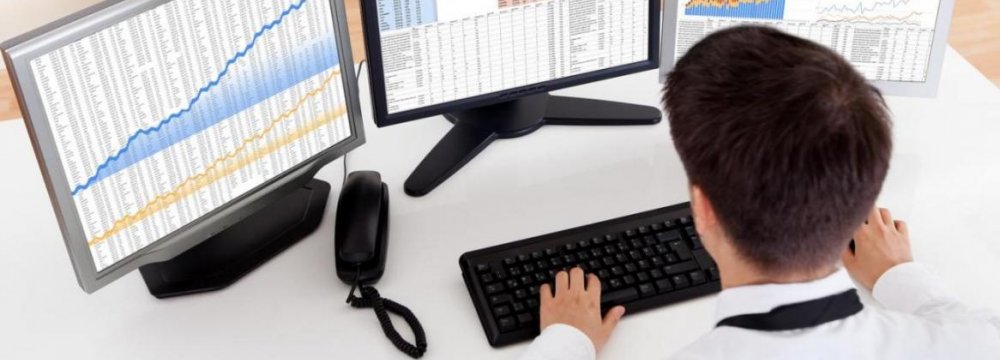Tehran Stock Exchange (TSE)’s 4-day losing streak in the week that ended on February 26, was accompanied by further retreat, with the TEDPIX plummeting more than 1 percent within 5 working days.
The credit crunch due to persistent non-performing loans, anemic economic growth, dramatic plunge in oil prices, and lingering ambiguities surrounding the next fiscal year’s budget (to start March 21), keep weighing on speculations over the performance of the equity market in the mid run.
As market analysts stoke concerns over the TSE’s record lows during the past few years, individual and institutional investors are opting to take their cash to rival markets, including the banking sector, where an annual interest rate of 22 percent is guaranteed.
Lagging indicators do not illustrate a bullish trend ahead, however, head of the Securities and Exchange Organization (SEO) in an exclusive interview with the Financial Tribune noted that, the stocks’ rock-bottom values makes for a perfect occasion for investor to shore up their portfolios with a long-run approach.
Regarding the challenges of the equity market, Mohammad Fetanatfard indicated that following an immense pullback, equilibrium is returning to the stock market and that no further plunge is expected, although re-opening refining companies’ symbols may leave a negative impact on the benchmark.
Amid global competition for various commodities such as iron ore, a revolution in exploitation should take place before the revival of the mining sector, which has a significant contribution to the gross-domestic-product (GDP).
The slowing economic growth in China, has weighed on global demand for iron, slashing expectations on iron ore demands accordingly. In such a narrow market, only companies with low exploitation costs can compete, while others are forced to shut down.
Brazilian mining company Vale, which is the world’s largest iron-ore producer, reported a fourth-quarter loss of $1.85 billion, compared with a year-earlier loss of $6.45 billion, Marketwatch reported. Hence, it can be concluded that old mines with outdated technologies may not be able to survive.
In a bid to ease lingering concerns in the mining sector, the parliament recently reduced mine royalties to between 15 and 25 percent to help them weather the global slowdown.
Other listed industries at the equity like petrochemicals firms are also grappling with both local and international challenges as tumbling oil prices have shed their commodity prices. However, amid a credit crunch, foreign direct investment along with competitive feedstock pricing could be practical remedies to give a boost to the sector.
TSE’s Weekly Report
Stocks had a downbeat performance in the week that ended February 26, with the TSE’s overall index plummeting 668 points or 1.03 percent compared to the prior trading week.
According to TSE data, the first market index shed 480 points or 1 percent to end at 47,439.8. The second market index lost 1,394 points or 1.11 percent to settle at 124,295.3. The free float index shed 970 points or 1.31 percent to 73,000. The industry index dropped 648 points or 1.19 percent to 53,643.4. The blue-chip index declined 31 points or 1.07 percent to stand at 2,865.1, and the financial index was down 152 points or 0.12 to 124,103.1.
Bears are still reigning over the equity market, with the benchmark slipping 16 percent since the extension of nuclear talks back in November 2014. The TSE’s gauge recorded close to 19 percent decline since the beginning of the current year, which ends March 20.
More than 2.6 million shares changed hands during the week’s sloppy trades, valued at close to 5.3 trillion rials to register 13.6 and 14.6 percent retreat for trade volume and value respectively.
The prospect of the economy is not good enough to entice both individual and institutional investors as TSE data illustrate that the number of traders decreased by 19 percent over the past week.
Despite all-embracing negative sentiments, fixed income bonds were shaky investors’ safe haven, as 587,647 bonds were sold to investors, valued at 578 billion rials, to register 279.4 and 283 percent growth in trade volume and value respectively.





